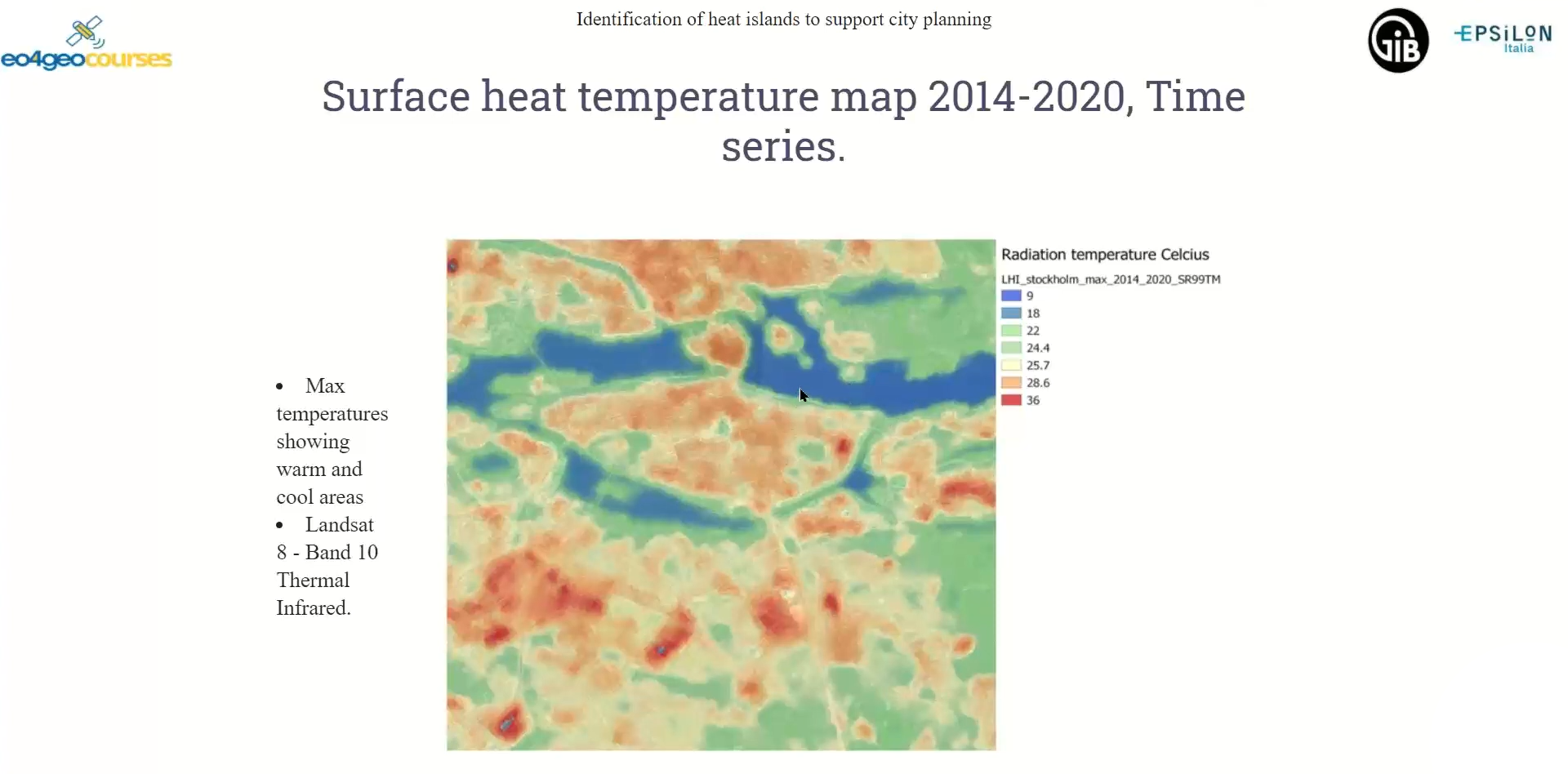EO Capability Benefits
Heat indices are widely applied in the fields of disaster preparedness and response, urban climate resilience, agriculture, and climate studies. Indices like the Heat Index (HI) are used to assess heat stress levels and their impact on human health. Heat-health early warning systems based on these indices then help governments and health agencies anticipate heatwaves, allocate resources, and prepare healthcare facilities. Indices like the Surface Urban Heat Island (SUHI) index quantify temperature differences between urban and rural areas and help in designing urban cooling strategies. Other Indices like the Water Deficit Index combine Land Surface Temperature (LST) with atmospheric humidity to monitor drought impacts on crops and natural ecosystems. Indices like the Heat Index (HI) and others, which are derived from reanalysis datasets (e.g. ERA5-HEAT), are used to project future heat stress scenarios under different climate change pathways.
EO Capability Description
Heat indices are derivatives combining other Basic EO capabilities such as LST, Atmospheric Humidity or Wind Speed. While some, like SUHI can rely solely on EO inputs (e.g. thermal infrared and Built-Up Extent), many others also require additional inputs such as relative humidity or atmospheric pressure which are usually derived from weather stations or reanalysis models like ERA5. Combining these disparate datasets always means dealing with datasets of varying spatial and temporal resolutions.
Datasets based on multispectral sensors (e.g. Landsat or Sentinel-2) provide higher spatial resolution but lower temporal resolution, meaning observations are less frequent. In addition, these sensor are affected by cloud cover. Datasets based on thermal infrared sensor (e.g. MODIS) provide frequent global coverage but at lower spatial resolutions.
Finally, best-in-class heat-related indices are always validated using ground-truth data.


